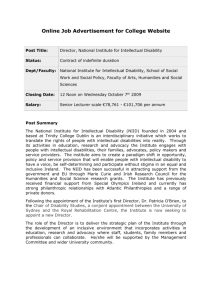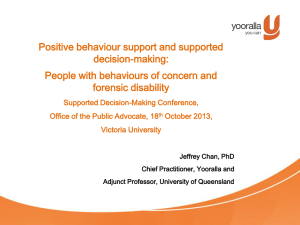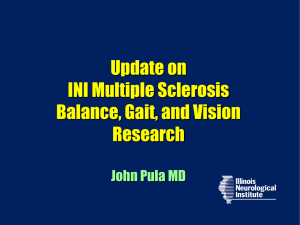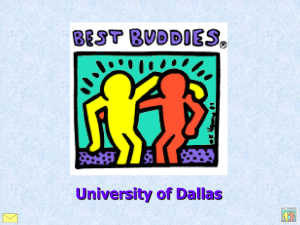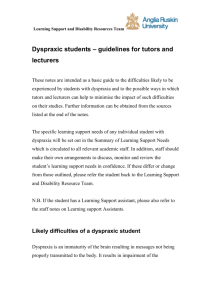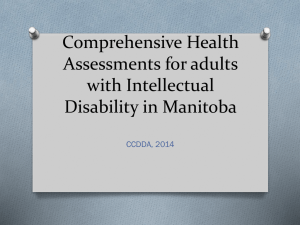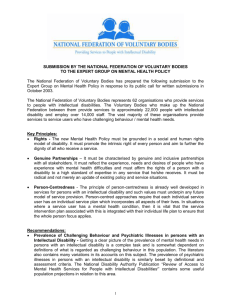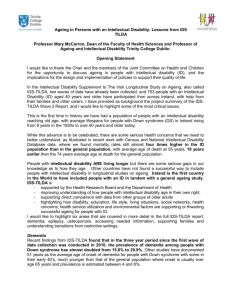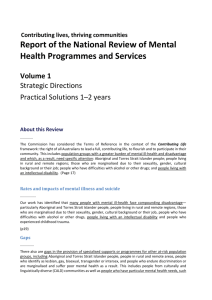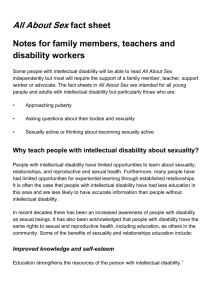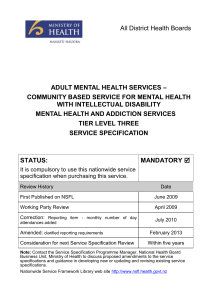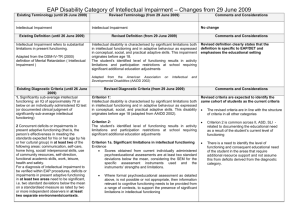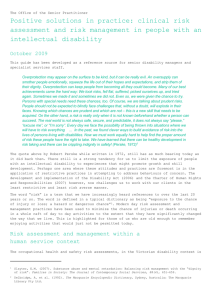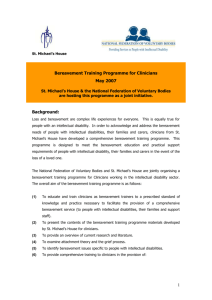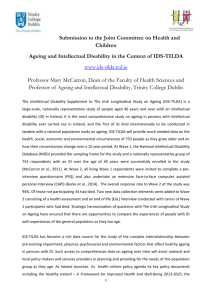YOUR LANGUAGE CAN IT IMPACT ON BEHAVIOURS?
advertisement
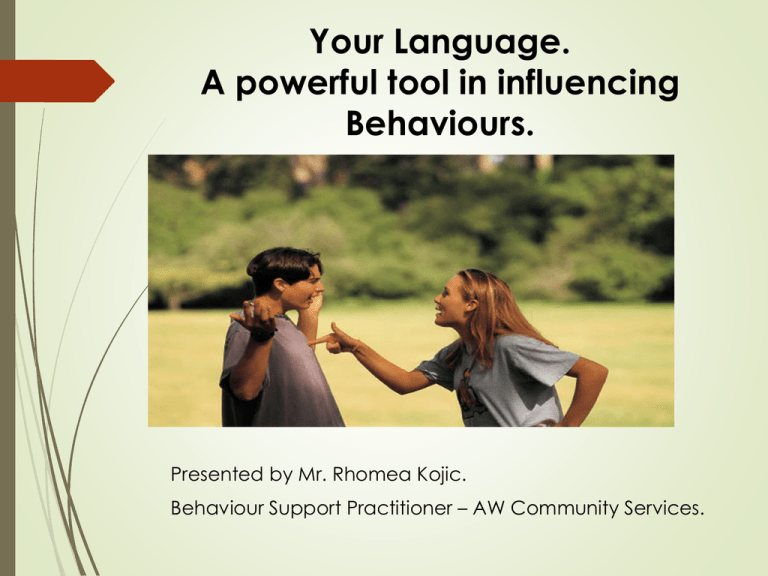
Your Language. A powerful tool in influencing Behaviours. Presented by Mr. Rhomea Kojic. Behaviour Support Practitioner – AW Community Services. Activity: Take 5 minutes to complete the questionnaire. What is Communication? “The imparting or interchange of thoughts, opinions, or information by speech, writing, or signs.” It is also defined as a “means of sending messages, orders, etc. including telephone, telegraph, radio, and television”. Biological definition - “An activity by one organism that changes or has the potential to change the behavior of other organisms.” Oxford & Webster Dictionary How Do We Communicate? We communicate in three major ways: Spoken (Verbal): There are two components to spoken communication. Verbal: This is what you are saying. Para-verbal: This means how you say it – your tone, speed, pitch, and volume. How Do We Communicate? Non-Verbal: These are the gestures and body language that accompany your words. E.g. arms folded across your chest, frowning, drawing on paper, tapping your feet, pointing. Question does our body language say more than our actual words? How Do We Communicate? Written: Communication can also take place via fax, e-mail, SMS or written word. With supporting some of the people we care for we may also use: sign language, real life objects, compics, social stories etc. GENERALISED CONSIDERATIONS: Mild intellectual disability (IQ 50-70) - may learn to read and write (depending on available educational opportunities). May incur difficulties with academic learning, (reading and writing at a basic level). Sensitivity and allowing for extra time may be required when requesting people read information or complete written forms. GENERALISED CONSIDERATIONS: Mild intellectual disability (IQ 35 – 50) - Most people can learn to recognise some words in context (such as Ladies/Gents/Exit) and many benefit from visual prompts, such as daily timetables and pictures used in communication systems. GENERALISED CONSIDERATIONS: Severe Intellectual Disability (IQ 20 – 35) or Profound Intellectual Disability (IQ <20) - will require lifelong assistance with communication. Often little or no speech and will largely rely on gestures, facial expression and body language to communicate their needs or feelings. Photographs or real life objects are very useful in assisting e.g. a picture of a cup, or a cup itself, may be used in conjunction with the spoken question, “Would you like a drink?” Receptive communication: Avoid technical jargon. Avoid long complex instructions. Speak more slowly and leave pauses for the person to process your words. Speak directly to the person concerned, and ensure they feel part of the conversation. Use clear short sentences. Receptive communication: Ask one question at a time and provide adequate time for the person to reply/respond. If it is necessary to obtain information from others maintain the focus on the person through your eye contact, body language and/or touch. If the person uses a communication device, then ensure they have access to it, and use it with them. Expressive communication: People with an intellectual disability may have difficulties expressing their thoughts or feelings. Cognitive impairment makes identifying, understanding and verbalizing these difficult. Keep the following points in mind: Expressive communication: Provide plenty of time for the person to respond, comment and formulate their questions or answers. You may need to explore to uncover what it is they are communicating. Visual cues – such as objects, pictures or diagrams – and facial expression and body language may all be useful in communicating. FURTHER: Each person is unique (personality, ability), regardless of IQ. Categories of mild, moderate, severe and profound levels of intellectual disability give some guide to the level of support someone might need, including communication. The way that person functions/communicates in their life will depend on many other factors. QUOTE OF THE DAY: “HAVING A DISABILITY DOESN’T MEAN WE CAN’T DO THINGS IT JUST MEANS WE FIND DIFFERENT WAYS TO DO WHAT NORMAL PEOPLE DO EVERYDAY”. Omar Deeb – Parramatta Advertiser – Wednesday, November 21, 2012. Behaviour – A Definition: “Actions and mannerisms made by organisms, systems, or artificial entities in conjunction with its environment”. Wikipedia Product of environment (interactions between people) or internal stimuli. Observable. Serves a purpose/functional. Defining Challenging Behaviour: Behaviour of such intensity, frequency or duration that the physical safety of the person or others is placed in serious jeopardy or behaviour which is likely to seriously limit or deny access to the use of ordinary community facilities (Emerson et al 1988). It is important to note that such behaviours are shown by only a minority of people with intellectual disabilities - 6.1% (Emerson 1995, p.24). “Challenging Behaviours represent a challenge to services and those providing support, rather than being a problem that the person carries around with them”. (Blunden & Allen, 1987). ACTIVITY: Take 5 minutes to complete the questionnaire. COMMUNICATION SKILLS: From a young age people generally develop a range of communication and social skills which enable them to get what they want and need. Many people with learning disabilities do not develop such skills or acquire different ways/skills. Left with much the same needs but much less competent ways of getting them met. THE RESULT: Or so we think. Communication and its effect: Level/s of stress. Relationships with others. Level of satisfaction with your life. Productivity – AI approach. Ability to meet your goals and achieve your dreams. Ability to solve problems. QoL Barriers from Communication: People with an intellectual disability encounter a number of specific barriers to a good quality of life. Cognitive difficulties may lead to difficulties understanding the importance and long term implications of lifestyle choices, food and nutrition, health etc. Limited literacy may mean they miss out on information in magazines, books newspapers etc. QoL Barriers: Communication difficulties between person and others may lead to difficulty in the reporting of past history, current experiences, wants, needs, symptoms etc. Communication and cognitive issues in relation to transport may lead to difficulties in independently accessing the community – social inclusion. TIPS : Attitude: Convey your respect for the person you support through your verbal and body language. Address the person and use a tone of voice consistent with their age – i.e. speak to an adult as another adult. TIPS : Communication: People with disabilities have a right to the same courtesy any other person can expect. If you have to be straight to the point with your communications remember to include praise, recognition e.g. thanks Johnny or well done. Use of body language e.g. smiling, thumbs placed up, high fives, light touch of the shoulder etc. TIPS : Remember to treat a person with a disability with respect. Don't treat them as inferior. They have feelings just like you and I. We are all intelligent in our own ways. Offer assistance but do not insist or be offended if your offer is not accepted. TIPS : Be aware of the tone of your voice - is it patronizing? Smile regularly. Focus less on the disability and more on the person. If you are in a public area with many distractions, consider moving to a quiet or private location. Be prepared to repeat what you say, orally or in writing. APPRECIATIVE INQUIRY: Traditional communication often focuses on what is wrong and how we can fix it. Think back to your last performance review, visit to the doctor, or your latest disagreement with a friend or spouse. Appreciative inquiry does the opposite: it focuses on what is right and how we can make it better. PURPOSE OF AI: Appreciate is defined as, “to value or regard highly; to be fully conscious of; be aware of; detect; to rise in value.” Inquiry is defined as, “the act of inquiring or of seeking information by questioning.” Random House Dictionary. Therefore, appreciative inquiry can be defined as, “the act of seeking information about the things that we value.” At home Exercise: The next time you communicate with a person you support - keep your hands behind your back or in your pockets and request them to do something they would normally do?
